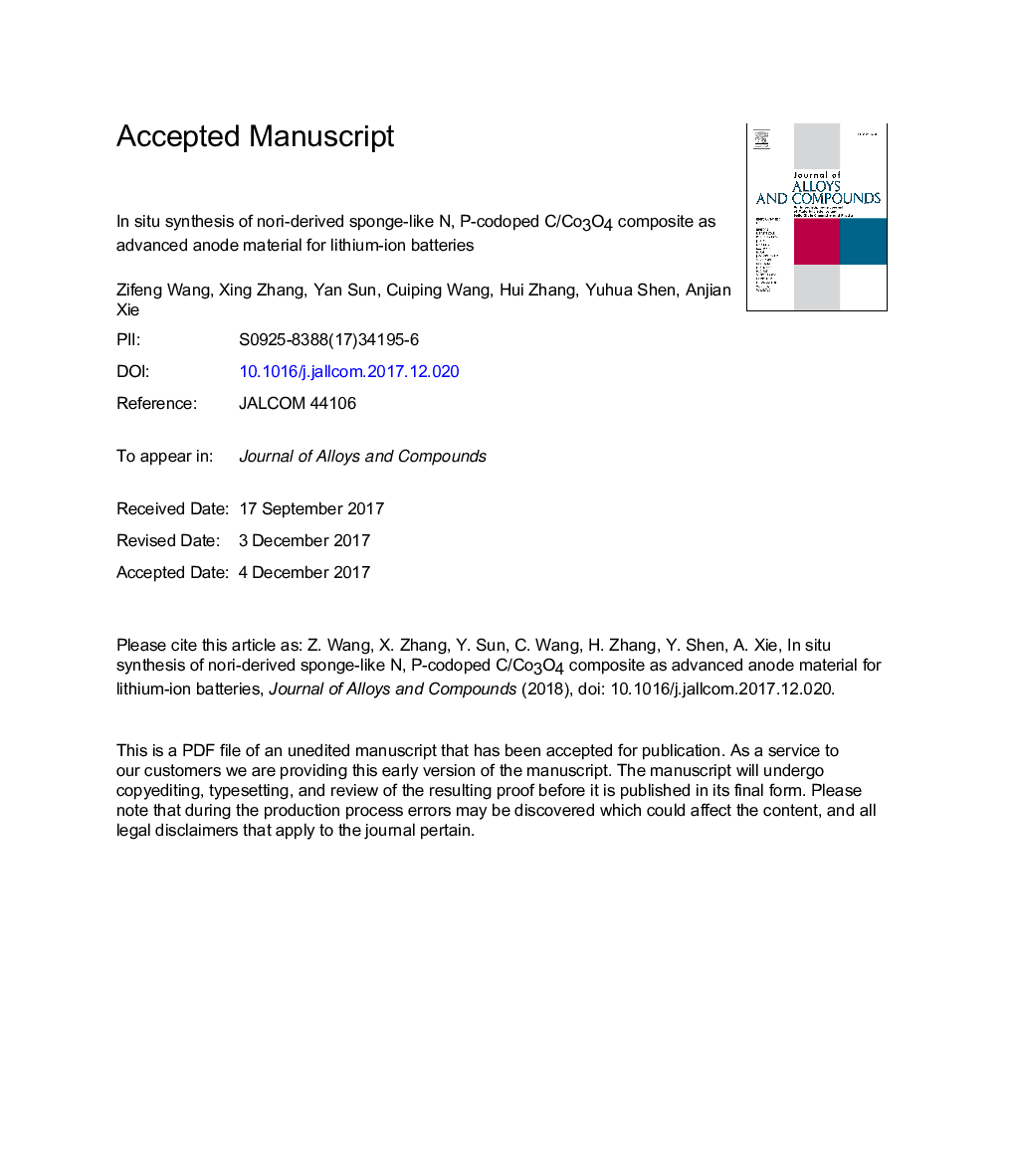| Article ID | Journal | Published Year | Pages | File Type |
|---|---|---|---|---|
| 7993737 | Journal of Alloys and Compounds | 2018 | 15 Pages |
Abstract
Developing environment friendly and low cost methods of fabricating advanced anode materials for lithium ion batteries (LIBs) is very important. Using nori as the precursor, we designed and synthesized the composite of nitrogen-phosphorus-codoped carbon matrixes and cobaltic oxide nanoparticles (N, P-codoped C/Co3O4) via hydrolysis of CoCl2 and calcination method. It is interested that the nori not only provided the dopant of N and P elements but also formed the sponge-like porous carbon matrices which exhibited a large specific surface area as 246.4 m2 gâ1. Both the dopants and the 3D porous carbon matrix are significantly helpful in improving the electrochemical performance of the product. Used as the anode material of LIB, N, P-codoped C/Co3O4 offered a high reversible specific capacity of 927 mA h gâ1 (the theoretical capacity of Co3O4 is 890 mA h gâ1) after 100 cycles at the current density of 100 mA gâ1 and a good rate capability of 454 mA h gâ1 at the current density of 1 A gâ1. Thus it is a promising alternative advanced anode material for LIB. In addition, the whole process is green, simple, economical and scalable and the method may be applied to synthesize other N, P-codoped carbon based composites.
Related Topics
Physical Sciences and Engineering
Materials Science
Metals and Alloys
Authors
Zifeng Wang, Xing Zhang, Yan Sun, Cuiping Wang, Hui Zhang, Yuhua Shen, Anjian Xie,
